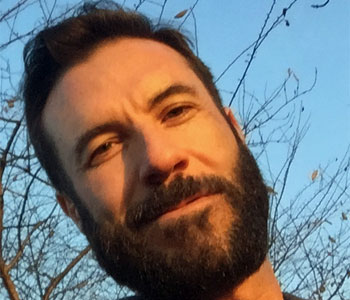Carol Becker
Thinking in Place: Art, Action, and Cultural Production
Paradigm Publishers
184 pages, 9 x 6 inches
ISBN 978 1594515972
ISBN 978 1594515965
Thinking in Place is a collection of nine essays written over the last five years of moving around the world.
Each essay is located in a place but sometimes the places are conceptual. So some essays are located in a geographical place such as Venice, while others are about Museums in general and the relationship of artists as cultural producers to the “collection” of objects that comprise museums and the attitudes of most curators and directors about the making of art. One essay is about “Gandhi’s Body” and how he used his body and his evolving nakedness to reflect his inner condition and how powerful his approach and his image became for the world.
The writing is poetic in nature but it is also narrative, philosophical, and theoretical. It is hard to characterize. And, the issues I cover range from the life of artists and art schools to the massacre of civilians in My Lai, Vietnam. The writing of each piece really reflects the way in which I thought about the place that generated the idea itself.
The book is about wandering as a way of organizing the experience of the world—wandering on the physical plane but also on the intellectual plane, moving within one’s mind. I wanted to reflect my thought-process as closely as possible. The first piece is about the complexity of my own half-Jewish, half-Catholic identity and its location in the streets of Brooklyn and in a small mining town in Western Pennsylvania. Ultimately, this identity-dilemma is about becoming a writer and recognizing that I couldn’t “live” anywhere, wholly, except inside the act of writing itself.

I am constantly surrounded by young people who will be the artists of the next decades. This allows me to track the evolution of consciousness through art, culture, and design.
The book really does reflect my years of thinking and training as an intellectual—as a public intellectual. Each of the essays evolved in response to a place and then to an opportunity to write and then “give” the essays in a public context. Sometimes I read them as lectures or keynotes many times before the final essay is developed. They are the product of an engaged intellectual life.
I put ideas out into the public arena and get feedback in the form of conversation, public and private dialogues. I then rework the writing. Often the essays were first published in one context—a performance studies journal or art magazine, or a cultural studies publication—and then refined and developed again until they were perfected for the book. They have done their time in a crucible of interaction.
I studied with philosopher Herbert Marcuse when I was a student at University of California, San Diego. So, although I was educated to be a professor of English and American literature, in fact, I became a cultural theorist very much influenced by the work and thinking of the Frankfurt School. I think that orientation is apparent in the way in which I go about understanding the world and also in the inherent optimism of my thinking.
I am also trained as a literary critic who became a writer about art; therefore, so much of what I write about concerns art and artists. I am also deeply an educator—and have spent years teaching and administrating art schools. Watching the new generation of cultural workers in art and design emerge has deeply affected how I think about the cultural arena. I am constantly surrounded by young people who will be the artists of the next decades. This allows me to track the evolution of consciousness through art, culture, and design.
But I am not an art or design historian. In truth, I have invented my own approach to art and culture, with a deep orientation to progressive political thinking. I admire Herbert Marcuse, Theodor Adorno, Zygmunt Bauman, Rebecca Solnit, and William Blake, all of who express wonderful ideas in fascinating ways. I would feel very fortunate for my writing ever to be associated with theirs.
I would hope that readers “browsing” would first look at the book’s cover. It is a dreamy image of water taken on the Hudson River by artist Ellen Kozak. I would want them to allow themselves to dream and wander and then to read the Prologue, which is called “Wandering Monks and Peripatetic Birds.” It begins,” Thinking in Place: Art Action and Cultural Production is the result of the past decade of wandering.”
If people read that and then go on to read about the range of places I have visited—Vietnam, Cambodia, Laos, India, Africa, Germany and sites such as the Wannsee House (where the “Final Solution” to the “Jewish Question” was determined), they would know a lot about me and how deeply place affects me, how everything begins in sense and then becomes response. Response then translates into ideas that then become philosophical constructs that then seek to be written. They then would know how much process matters to me; I think about writing as artists think about art making.
The readers would come to understand that the book is also about them, about how they think, and they could then reflect upon their own method of thinking in place as I have reflected on mine.

Everything begins in sense and then becomes response. Response then translates into ideas that then become philosophical constructs that then seek to be written."�
Because I was educated to be a literary critic and came up during the time of modernist and postmodern theory, I have had to find ways of writing that communicate how I think in ways that are translatable to others. I want the writing to be elegant, poetic, seductive, because deep within it there are ideas, which, if adopted, believed, cherished, could transform consciousness.
These are not my ideas alone; they are the ideas of centuries of utopian thought. I want these ideas to permeate people’s consciousness—ideas about the importance of art for human well-being, the end to war as a solution to conflict, the importance of community and the public sphere to a democratic society, and so forth.
These ideas are not presented as political messages; they are presented as the struggle for humanity’s survival. I want these ideas to saturate people’s desire as they have mine. And I want the writing to be so engaging that people remember why they love this world and therefore want to protect it and its inhabitants across national and international boundaries.
Simply, I always write for people—not for the art world, literary world, sociological world and so forth. I hope the book can cross many boundaries. This is not easy since all books are “shelved” somewhere, whether physically or virtually.
But thinking does not fit easily into such categorizations. And the problems of the 21st century will not be solved by “disciplines” but by ideas and by the willingness of people to extend beyond themselves and their own culture, to recognize themselves in the Other, as part of a species whose evolution should be considered, whose future can be consciously determined.




We don't put paywalls. We don't distract you with ads. We don't sell your data.
Please help to keep this running!